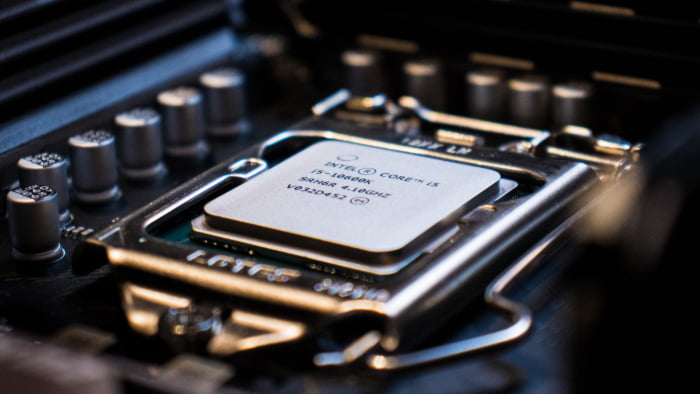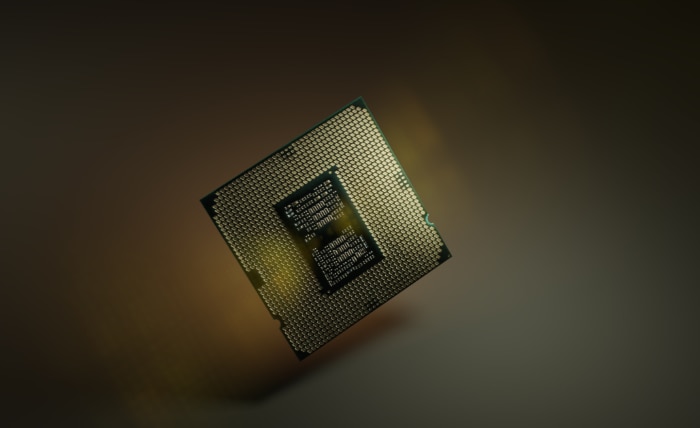How to Fix CPU Overheating: Beat the Heat

Overheating of the CPU isn't just a minor annoyance; it's a critical issue that can have long-term detrimental effects on your computer's performance and lifespan. You've likely experienced your system suddenly shutting down or drastically slowing its operations—a telltale sign of a CPU struggling to manage excess heat.
These occurrences don't just disrupt your workflow; they also signify underlying issues that require immediate attention.
Unraveling the Causes Behind CPU Overheating
Identifying the root causes of CPU overheating is the first step towards effective troubleshooting. By examining both internal and external factors, you can pinpoint the issues leading to elevated temperatures.
Once the causes are identified, resolving the problem becomes a more straightforward endeavor.
Thermal Design Power (TDP) and Its Importance
Thermal Design Power or TDP is a metric that indicates the amount of heat a CPU is expected to generate under maximum load. Manufacturers design cooling solutions based on the TDP of the CPU.
If your cooling solution isn't suited to the TDP level of your CPU, overheating can occur. Therefore, it's crucial to ensure that your cooling system is compatible with the CPU's TDP.
Internal Factors Contributing to Overheating
Dust Accumulation
Dust can clog the CPU's cooling fan and heat sinks, leading to inefficient heat dissipation. Over time, this inefficiency can escalate into overheating issues.
Inadequate Thermal Paste
Thermal paste acts as a conduit for heat transfer between the CPU and its cooler. If applied incorrectly or if it has dried out, the heat dissipation will be compromised.
External Factors Contributing to Overheating
Poor Airflow
A poorly designed computer case may restrict the flow of air, preventing efficient cooling. The placement of internal components can also obstruct air pathways.
Ambient Temperature
The environment in which your computer operates plays a significant role in its cooling efficiency. Operating your computer in a warm environment will naturally make it harder for the system to cool down.
Hardware and Software-Related Stress
Overclocking
Pushing your CPU beyond its intended speed through overclocking can result in higher heat generation. While some advanced cooling solutions can handle overclocked systems, inadequate cooling will lead to overheating.
CPU-Intensive Applications
Running applications that demand high CPU resources can also lead to overheating, especially if the cooling system isn't capable of dissipating the generated heat effectively.
Essential Tools for Addressing CPU Overheating
Before you can tackle the issue of CPU overheating, it's vital to gather the necessary tools for both diagnosis and resolution. The good news is that you can often resolve CPU overheating with a few readily available hardware and software tools.
Having the right instruments at your disposal will make the entire process smoother and more effective.
Software Tools for Monitoring CPU Temperature
HWMonitor
This application provides real-time information about your system's vital statistics, including CPU temperature. HWMonitor is easy to use and offers detailed insights into the hardware's status.
Core Temp
Specializing in temperature monitoring, Core Temp supports most processor brands and displays temperature data for each individual core.
Hardware Tools for Physical Examination
Thermal Paste
Thermal paste ensures effective heat transfer between the CPU and the cooling solution. Good quality thermal paste can significantly improve cooling efficiency.
Isopropyl Alcohol
For cleaning off old thermal paste from the CPU and the heat sink, isopropyl alcohol is highly effective and leaves no residue.
Screwdriver
You'll often need a screwdriver to disassemble parts of your computer, such as the CPU fan or heat sink, for cleaning or replacement.
Compressed Air Can
Dust can be a major culprit in blocking airflow and causing overheating. A can of compressed air can help remove dust from hard-to-reach areas inside the computer case.
Starting Steps for Identifying and Tracking CPU Overheating
Before you embark on any repair or maintenance activities, it's important to first confirm that your CPU is indeed overheating. There are several ways to monitor CPU temperature, ranging from built-in system utilities to third-party software.
The goal is to keep a close eye on temperature levels while the computer is both idle and under load.
How to Check CPU Temperature
System BIOS
The BIOS (Basic Input/Output System) often contains information about the hardware, including CPU temperature. To access this data, reboot your computer and enter the BIOS during startup, usually by pressing a designated key such as F2, F10, or Delete.
Third-Party Software
As previously mentioned, software like HWMonitor and Core Temp can provide a more user-friendly interface for monitoring temperature. After installing one of these programs, launch it to view real-time temperature data.
Identifying Safe Temperature Ranges
Different CPUs have different optimal temperature ranges. Generally, a temperature between 30°C and 40°C at idle and 60°C to 85°C under load is considered safe for most CPUs.
Intel vs. AMD
Intel and AMD processors may have slightly different temperature tolerances. Always refer to the manufacturer's specifications to ascertain what constitutes a safe operating temperature for your specific CPU model.
Real-Time Monitoring for Accurate Diagnosis
Continuous monitoring can help identify patterns and triggers for overheating. Keep track of temperature changes during different activities, such as gaming, streaming, or running CPU-intensive applications.
Sudden Spikes
Be vigilant about unexpected temperature spikes, as they may indicate a specific application or process that is stressing the CPU. Use system monitoring tools to identify which processes are consuming the most resources.
With the right monitoring techniques and tools, you can gather accurate data on your CPU's temperature. This will not only confirm the presence of an overheating issue but also offer clues as to what may be causing it.
Once you have this data, you're well-prepared to proceed with the appropriate corrective measures.
Steps for Examining and Cleaning Your CPU

After confirming that your CPU is overheating and identifying potential causes, the next logical step is a physical inspection of your computer's interior. This involves opening the computer case to examine the CPU, cooling fan, and other components that may contribute to overheating.
During this phase, cleaning plays a crucial role in rectifying any problems that may be found.
Preparing for the Inspection
Turn Off and Unplug the Computer
For safety reasons, make sure to turn off the computer and disconnect it from the power source. Remove all peripheral devices like the mouse, keyboard, and external drives.
Gather Tools
Have all the necessary tools at hand, such as a screwdriver, compressed air can, and isopropyl alcohol, to make the process seamless and efficient.
How to Open the Computer Case
Removal of Side Panel
Most computer cases have a side panel secured by screws or a latching mechanism. Use a screwdriver to remove the screws or release the latch to gain access to the internal components.
Cleaning Dust from the CPU Fan and Heat Sinks
Using Compressed Air
Hold the can of compressed air at an angle and gently blow away dust from the CPU fan and heat sinks. Be cautious to not spin the fan blades with the force of the air.
Reapplying Thermal Paste
Remove Old Paste
Use isopropyl alcohol and a soft cloth to remove the old thermal paste from the CPU and the cooler. Ensure that both surfaces are clean and dry.
Apply New Paste
Put a small, pea-sized amount of thermal paste onto the center of the CPU. When the cooler is reattached, it will spread the paste evenly over the surface.
Verifying Component Placement for Airflow
Ensure that cables and other internal components are organized in a manner that allows for unrestricted airflow. Rearrange items if necessary to clear air pathways.
With a thorough physical inspection and cleaning, you can remove many of the obstacles that contribute to CPU overheating. From here, you're well-prepared to evaluate the effectiveness of your efforts by once again monitoring the CPU's temperature.
Enhancing Your System for Improved Airflow
Even after cleaning and reapplying thermal paste, maintaining optimal CPU temperature is an ongoing task. One key factor in this is optimizing your system for better airflow.
Effective airflow ensures that hot air is expelled and cool air is drawn in, thereby aiding in maintaining a balanced CPU temperature.
Importance of Computer Case Design
Choose the Right Case
The design of your computer case can significantly impact airflow. Look for cases that have well-placed vents and options for multiple fans.
Case Fans
Installing additional case fans can improve ventilation. Typically, front or bottom fans act as intake fans, drawing cool air in, while rear and top fans serve as exhaust fans, expelling hot air out.
Cable Management for Unrestricted Airflow
Use Cable Ties
Loose cables can obstruct airflow. Bundle cables together and tie them up using cable ties, making sure they are out of the way of air pathways.
Avoid Blocking Vents
Ensure that cables are not obstructing any vents, as this can interfere with both intake and exhaust, causing uneven airflow and potential hotspots inside the case.
Optimizing Fan Speeds
Fan Control Software
Some motherboards come with software that allows you to control the speed of your fans. Increasing the fan speed can facilitate better airflow but may result in more noise.
Manual Control
If you prefer manual control, some cases come with built-in fan controllers that let you adjust fan speed with physical knobs or switches.
Proper System Placement
Keep it Elevated
Placing your system on an elevated surface, as opposed to a carpeted floor, can enhance the intake of cool air from the bottom.
Room Ventilation
The room where the computer resides should also be well-ventilated. Make sure it's not crammed into a corner where hot air can accumulate.
Through strategic adjustments and configurations, you can make your system more conducive to effective airflow. This contributes to a more stable and cooler CPU, thereby improving both system performance and longevity.
Conclusion
Managing CPU overheating involves a comprehensive approach that starts with identifying the causes and extends to continuous monitoring and physical maintenance. The process is neither too complicated nor too simplistic, requiring a mix of software and hardware tools for accurate diagnosis and effective solutions.
From the selection of the right case design for better airflow to the meticulous application of thermal paste, every step has its significance. Addressing each of these aspects not only resolves current overheating issues but also prevents future complications, contributing to the overall health and longevity of your computer system.


